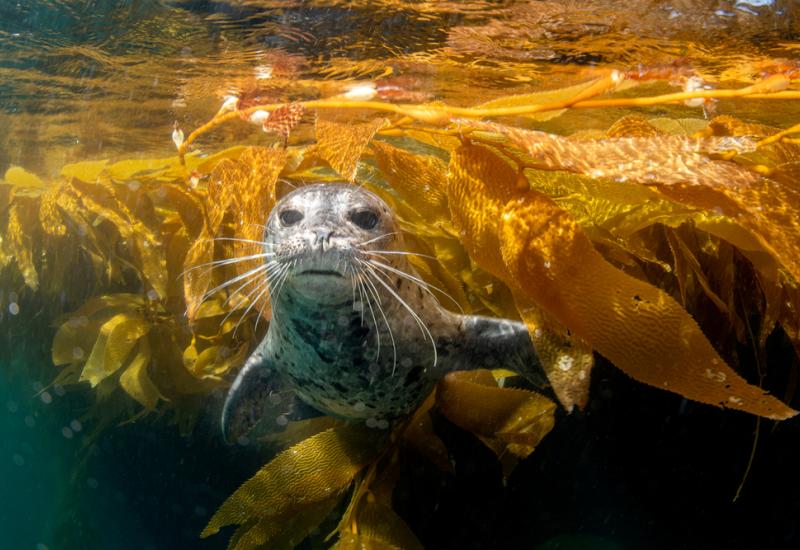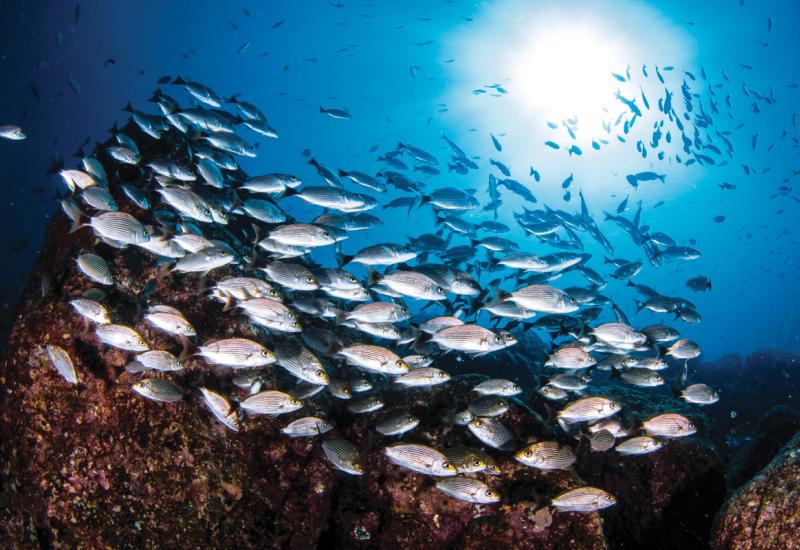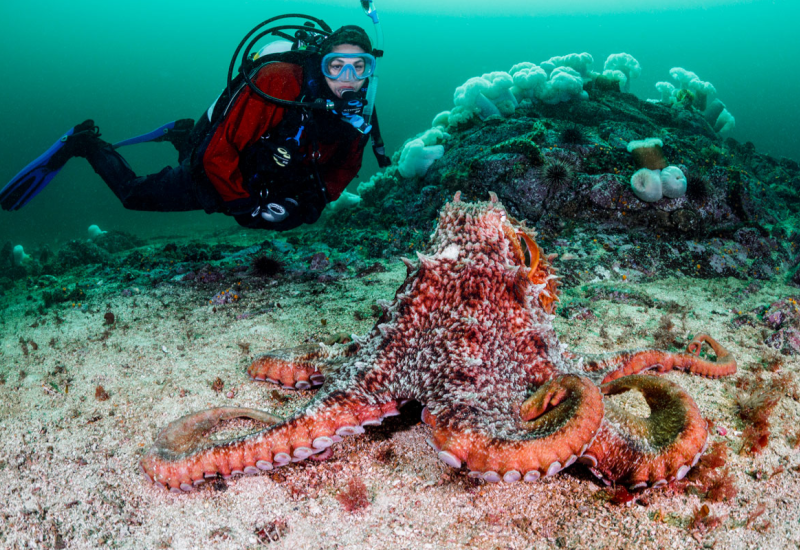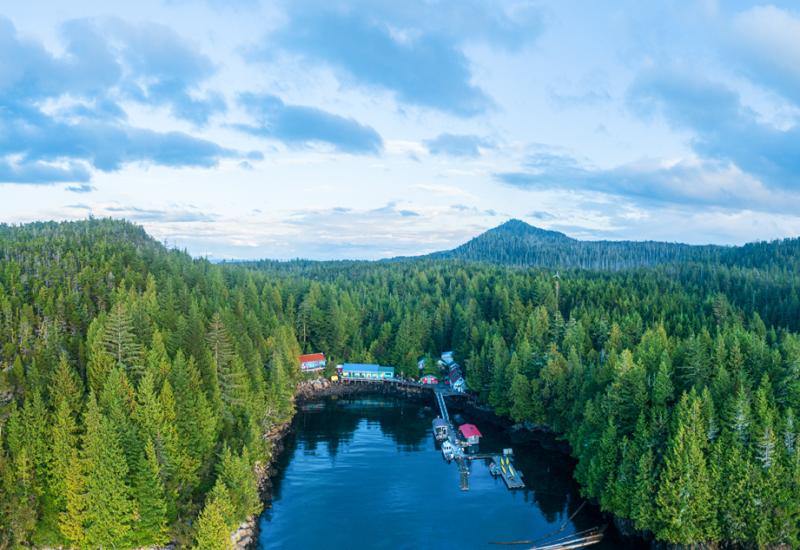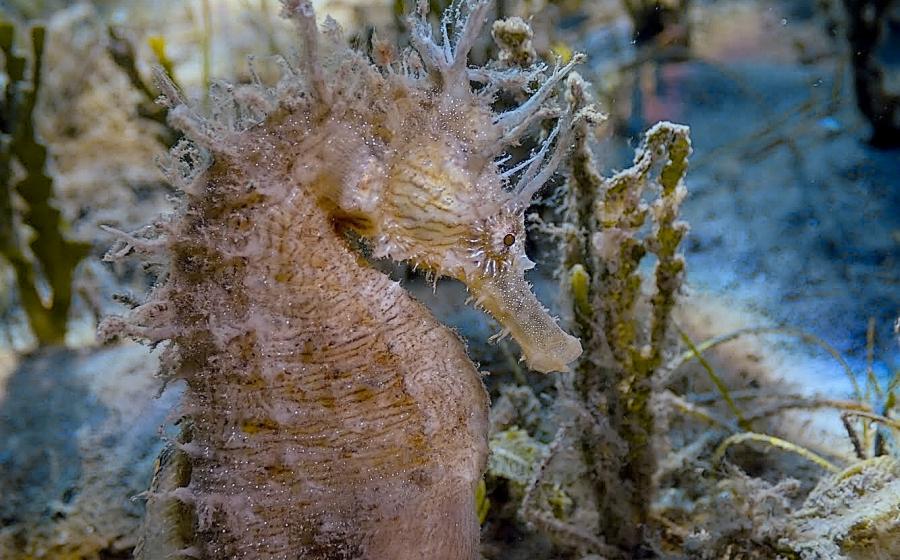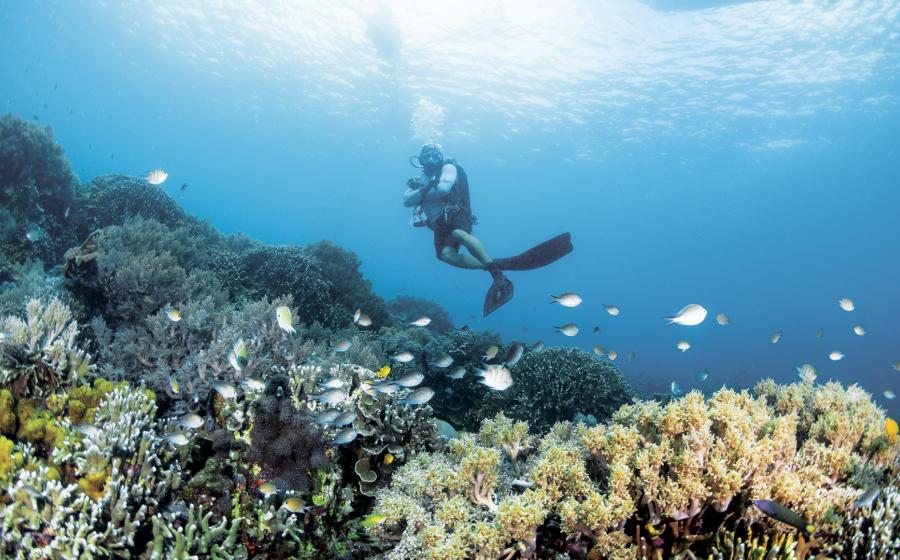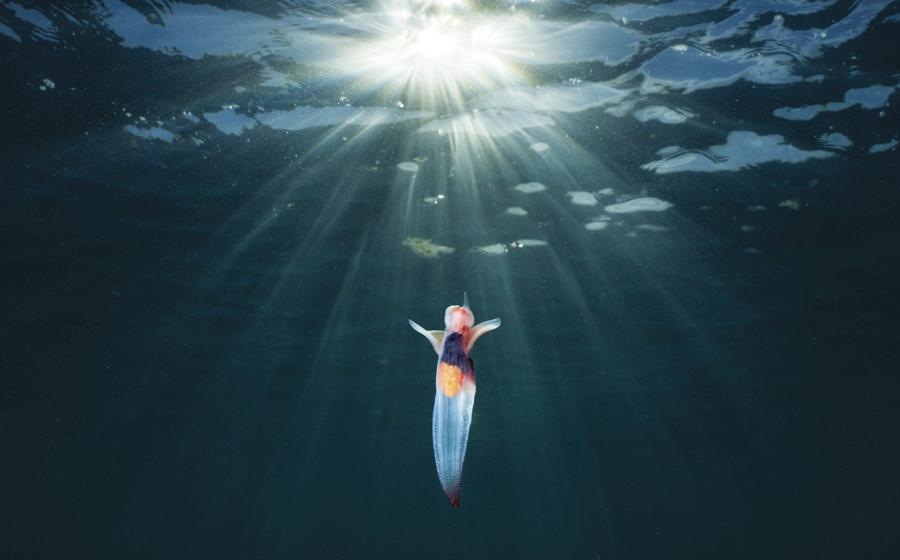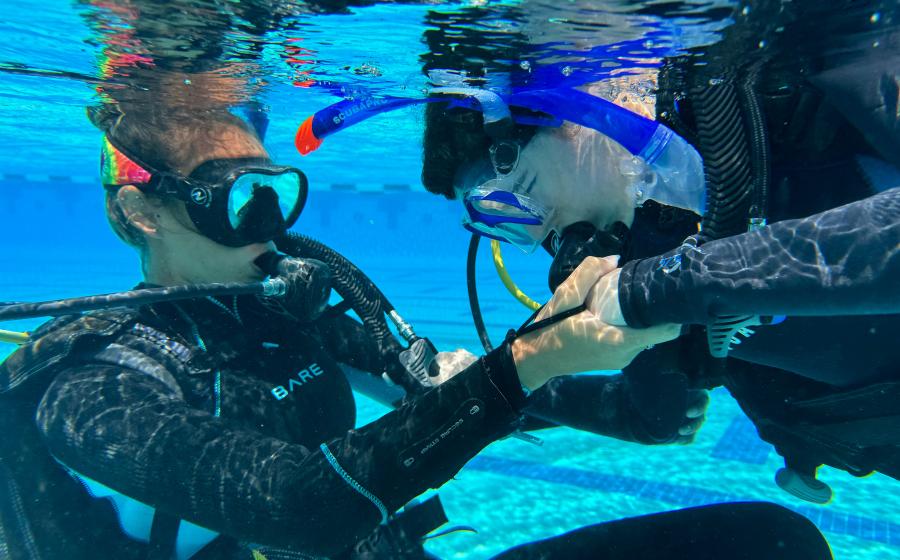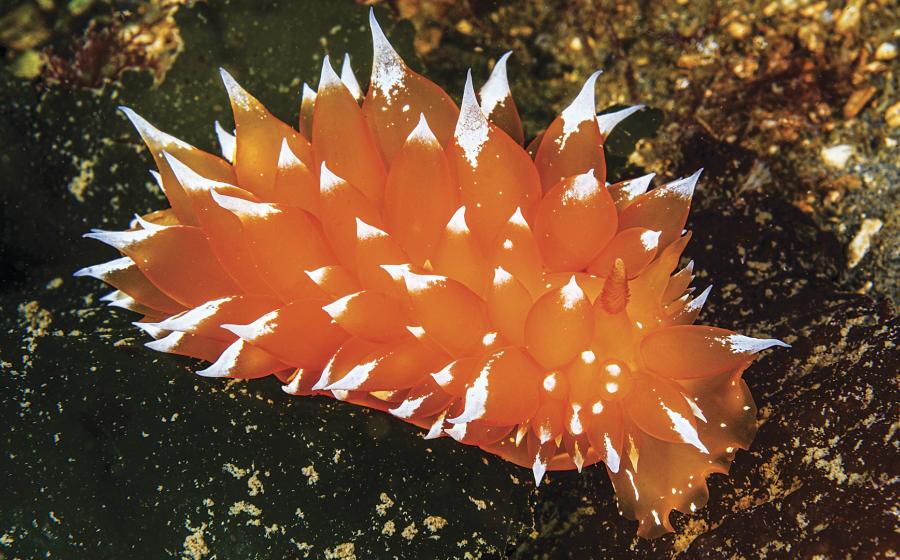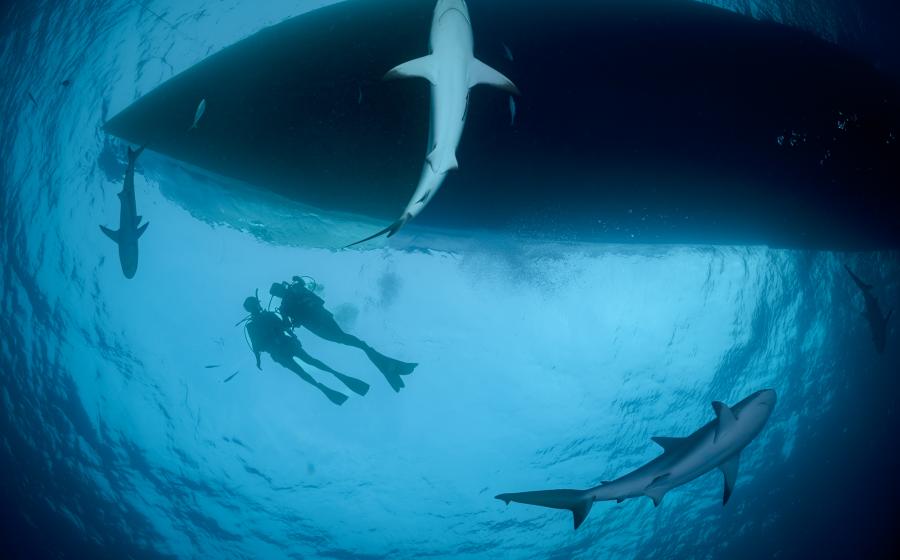What It's Like to Dive with Polar Bears
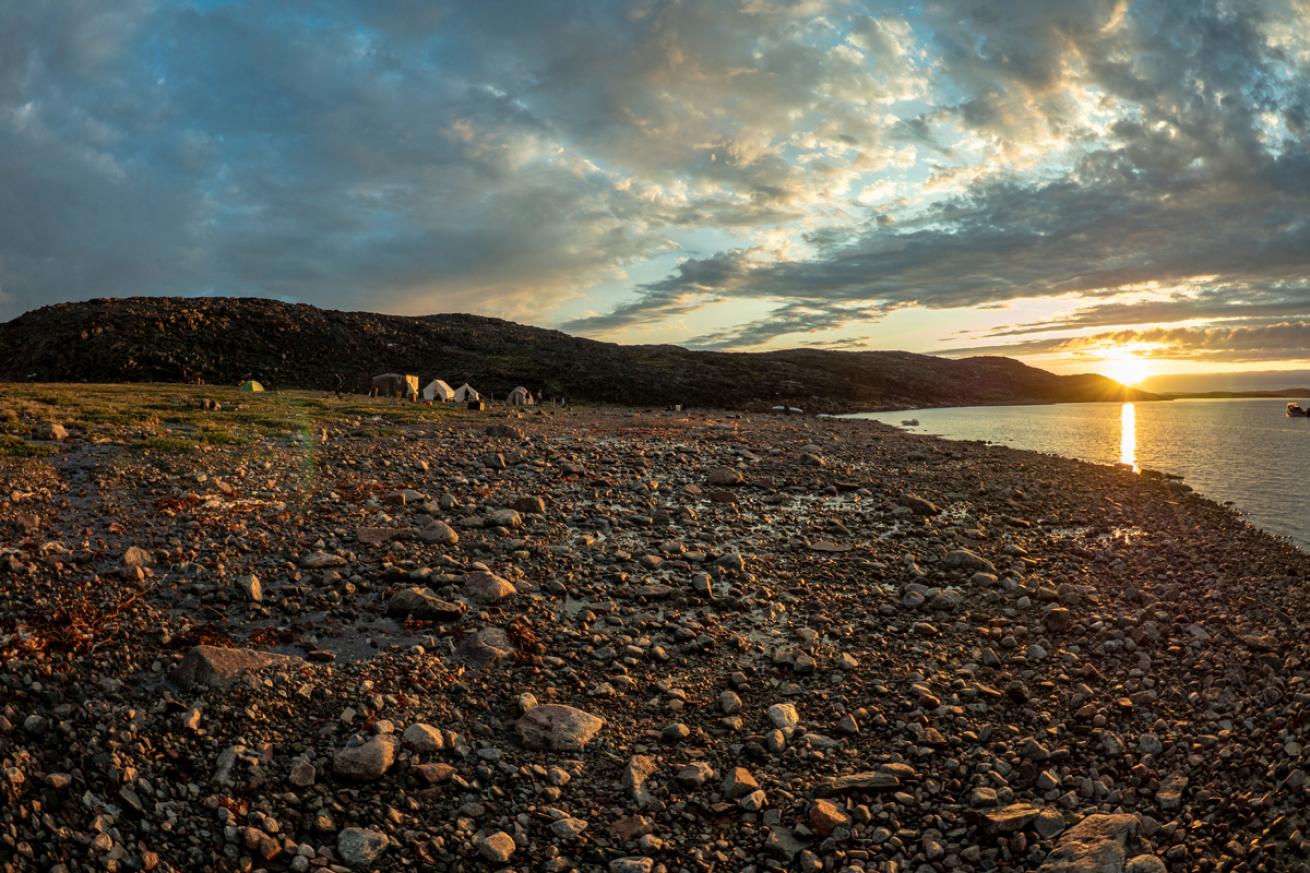
Jill HeinerthThe camp where the author and her crew stayed at White Island in the Canadian Territory of Nunavut.
On the rocky shoreline of White Island, in the Canadian Territory of Nunavut, I stumble out of a twenty-four-foot Moosehead canoe after a 6-hour run from Naujaat in stinging, freezing rain. Dodging bergy chunks in the fog north of the Arctic Circle is never comfortable, and my legs are cramped, stiff from sitting atop piles of hard camera cases. With each blink, my lids get heavier from the frost that crusts over my eyelashes.
I stumble up a slippery pebbled beach with a dive bag over my shoulder. I’m eager to reach a wind-bleached wooden hut that will be home to my film crew colleagues and me for the next two weeks. The door creaks as I kick it open, and an overwhelming stench assaults my nostrils. A torn-up carcass of something white on the floor of the hundred-square-foot shed gets my attention. The tangle of leathery hide, soft fur, and ivory bones was once an Arctic fox. Ripped apart by either a wolf or a wolverine, like me, the fox saw this shack as a safe place.
After I clean up the mess, I’ll sleep like a baby, cozy in this tiny house with my five crew-mates, lined up like nesting spoons in goose down sleeping bags, on the narrow wooden platform we call a bed. I will dream of filming walrus, narwhal, and belugas while our guides get busy installing a perimeter of electrified wire that might deter roving polar bears that are certain to visit our camp. A brave but diminutive wire-haired terrier on a short leash outside the fence is eager to bark as our first alert for intruders. We must remember that we are part of the food chain in this stark and uninhabited place.
I’ve been filming with this crew all summer, and we have developed a deep and trustful friendship that only comes from shared adversity. My diving partner Mario Cyr has been filming in the Arctic wilderness his entire career. He was the first person to photograph wild polar bears while diving and is briefing me on critical safety issues. “It is very, very dangerous,” he says in his thick French-Canadian accent. “You must not be close to the ice or shore, or the bear will grab you. Then it is all over. Dive deep, as fast as you can when he comes close.” He finishes with a sinister laugh. “I will show you.” But as I take in the warning, I can’t help but note that the wide-angle lens on my camera will offer the best image when the bear is about five feet away. The thought makes me tremble.
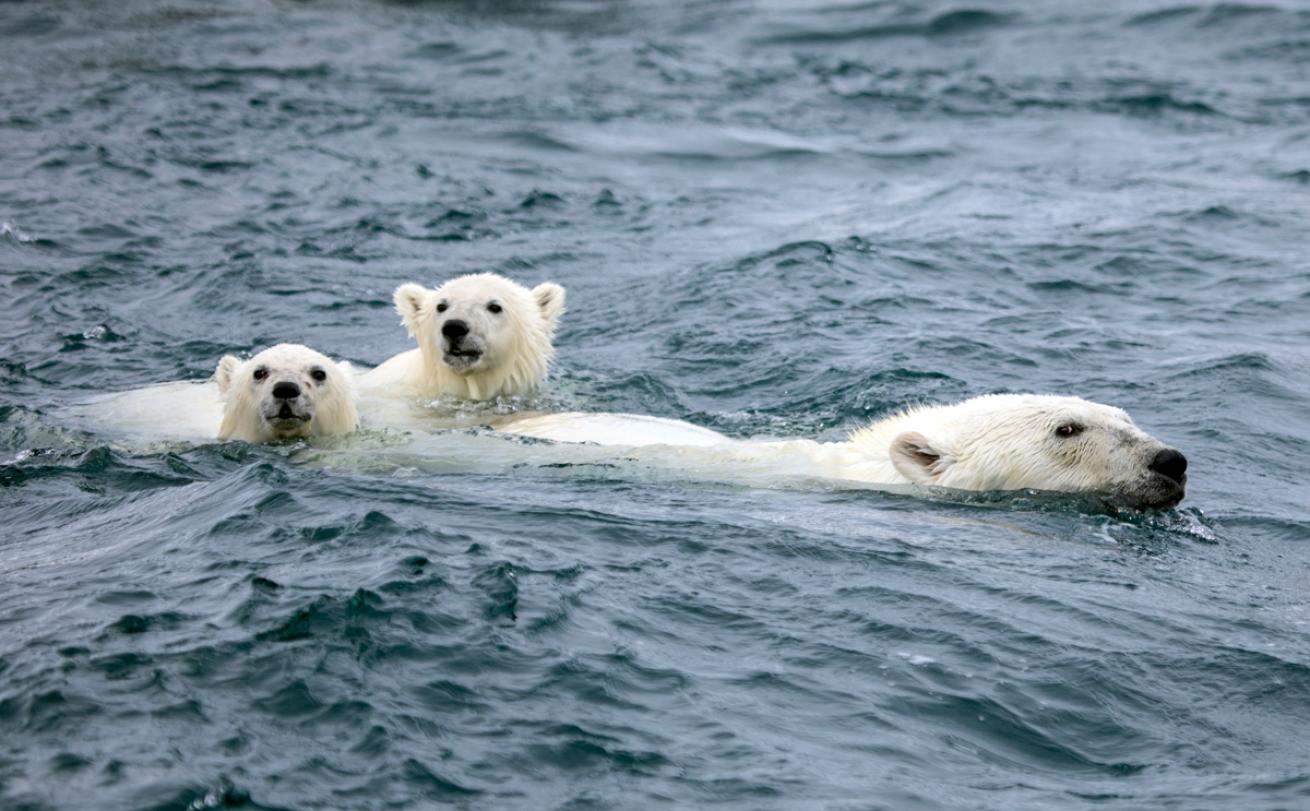
Jill HeinerthA family of polar bears sticks to the surface while swimming in Canada.
Honestly, I’m terrified. The thought of jumping in the water to act as polar bear bait makes me wonder whether I should be here at all. I don’t relish finishing my life as some animal’s chew toy, but I am also excited about the possibility of getting a shot of a polar bear swimming from below. Polar bears typically hunt on top of the ice, but climate change has forced them into the water to find food. With the loss of sea ice, they are swimming seven times more than just twenty years ago.
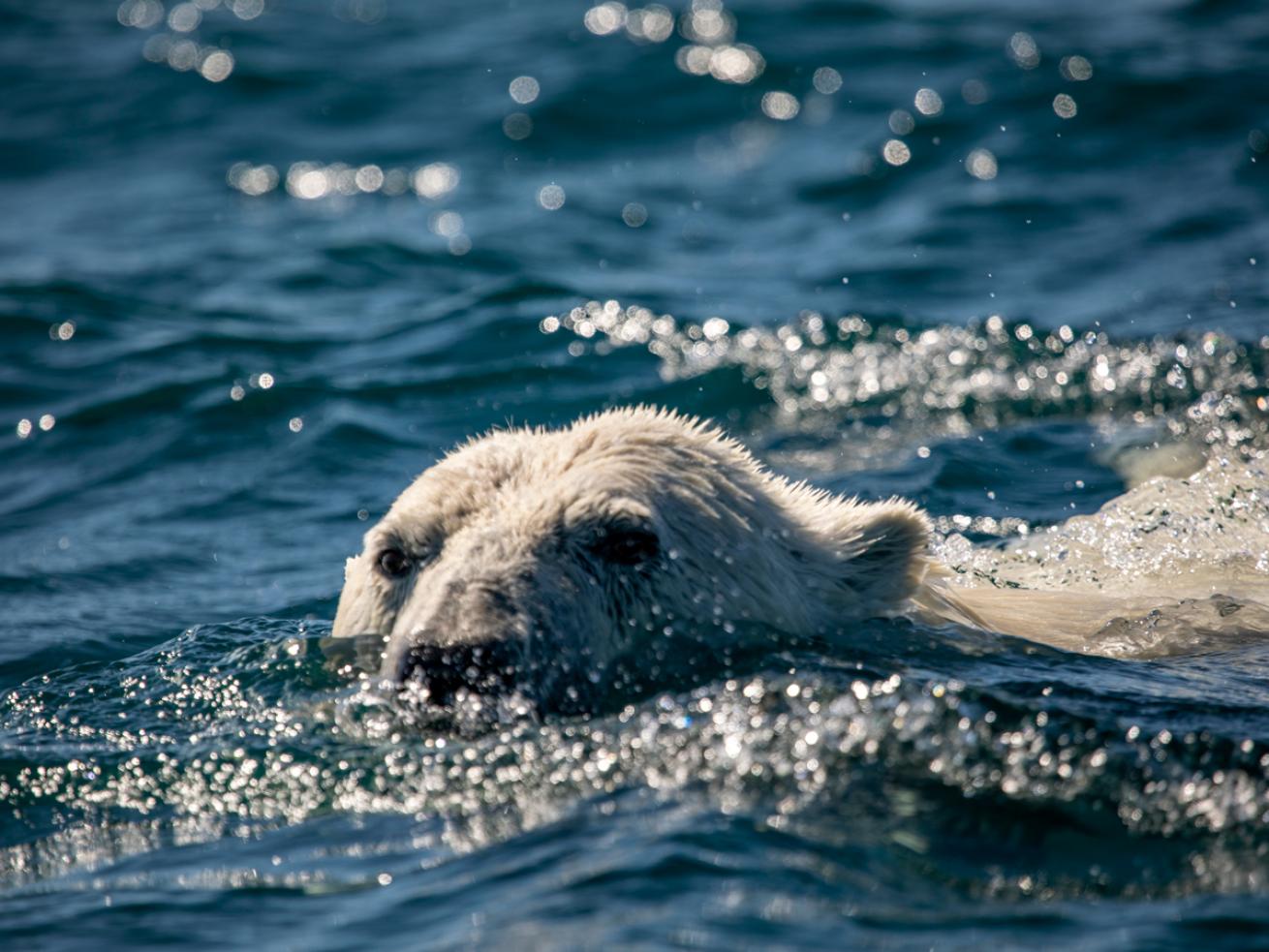
Jill HeinerthA polar bear locks eyes with author and photographer Jill Heinerth.
On the big day, we find “the right bear” – not too aggressive, perhaps a bit tired, and not licking his chops. We roll out of the canoe and use it to block the polar bear’s view while Inuit guide, Solomon Maliki passes down our heavy cameras. We have doubled up on weight belts to ensure a vertical escape to the depths, so staying on the surface requires a bit of kicking. I’m leaving nothing to chance. Once in position, Solomon backs up the boat so the bear can see our heads on the surface. At first distant, the enormous bear quickly turns and bolts full speed toward us. Huffing and snarling, I know he has one thing on his mind. Our neoprene-covered heads look like tasty, bobbing seals. Polar bears can swim six miles per hour for ten days without stopping for food or rest, so I know he won’t give up. When Mario yells, “DIVE!!!” I plunge beneath the waves trying to get a shot of the mighty Nanuk as it swims overhead. His massive front paws stroke in a rhythmic dog-paddle with his back paws maneuvering to steer. His long white hair wafts and ripples in the current. On top of Mario’s stream of bubbles, the bear dodges left then right and dives down, making eye contact. I recall a story from diving icon Amos Nachoum. Over a dinner conversation in Washington, he regaled me with tales about a polar bear that almost got him, nearly 60-feet deep! I’m ready to go head first for depth records, but the bear pauses, either struggling to equalize his ears or overcome by his fatty, late-summer buoyancy. Either way, he bobs up while I head down, waiting to hear three revs of the engine, signaling the “all-clear.”
Many people think I am crazy for being a professional cave diver, but I have to say, this takes the cake! I am at the whims of Mother Nature without any control over the outcome. I’ll cave dive again, but this might be the last time I get this close to the greatest predator in the Arctic.
MORE: Watch the video below as Jill Heinerth recalls her time exploring underneath the Arctic sea ice.

